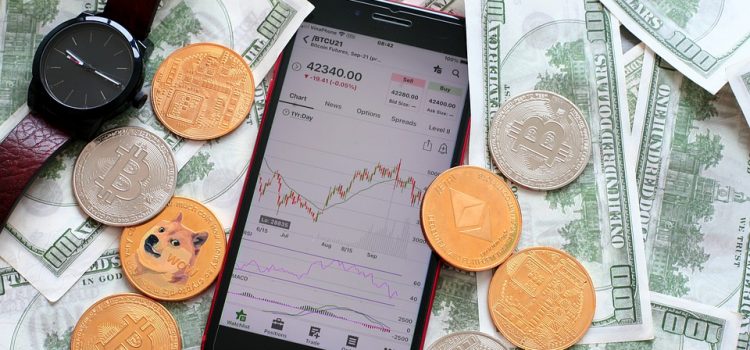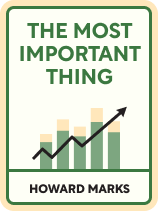

This article is an excerpt from the Shortform book guide to "The Most Important Thing" by The Princeton Language Institute and Abby Marks Beale. Shortform has the world's best summaries and analyses of books you should be reading.
Like this article? Sign up for a free trial here.
What’s risk in investing? What are the signs of a risky market?
According to The Most Important Thing by Howard Marks, any approach to investing requires an understanding of risk. He defines risk as the probability that you’ll lose money because that’s investors’ greatest concern.
Take a look at the concept of risk in investing, and how to spot a market with high risk.
Marks’s View of Risk vs. the Academic View of Risk
We know what Marks’ definition of risk is, but what is risk in investing, according to academics? To see the novelty of Marks’s definition, it helps to understand the main alternative that he rejects—namely, the standard academic view that equates risk with portfolio volatility, the extent to which the portfolio experiences swings in value. As Marks relates, this view is based on the assumption that more volatile investments are less reliable, increasing risk for investors.
(Shortform note: In The Warren Buffett Way, Robert G. Hagstrom clarifies that academics equate risk with volatility because of their reliance on the efficient market hypothesis (EMH). Hagstrom points out that, because the EMH assumes all investing success boils down to luck, proponents of the EMH believe that investors with volatile portfolios are simply more likely to lose money. So, it stands to reason that Marks’s disagreement with academics’ view on risk stems from his disagreement with their view on market efficiency.)
In Marks’s evaluation, this academic view misses the mark. Specifically, he suggests that investors aren’t concerned with portfolio fluctuations per se because fluctuations alone don’t always cost investors money in the long run. On the contrary, a security’s price might fluctuate wildly, but as long as its price follows an upward trend over time, it can yield large returns. For this reason, Marks clarifies that the real risk of investing is the possibility of permanent loss—based on his own investing experience, he argues that this prospect most worries investors.
(Shortform note: Some experts disagree with Marks’s claim that investors aren’t concerned with portfolio fluctuations. According to experts in behavioral finance, many investors suffer from myopic loss aversion—the combination of loss aversion and a tendency to chronically check their portfolios. As Daniel Kahneman relates in Thinking, Fast and Slow, loss aversion refers to our tendency to weigh losses more heavily than equivalent gains. Thus, when investors suffer loss aversion and chronically check their portfolios, losses from short-term fluctuations can prove psychologically painful.)
The upshot is that risk can’t be objectively measured, and only investors with careful qualitative analysis can discern the risk associated with a given security. In particular, Marks argues that investors must ascertain how stable a security’s intrinsic value is, along with the nature of the connection between this value and the security’s market price. After all, these are the two factors that determine the likelihood of loss: If a security’s value dips, or the market fails to accurately reflect this value, investors will lose money.
(Shortform note: Although Marks claims we can’t objectively measure risk, many professional economists attempt to do just that. For example, some economists measure risk via the Sortino ratio, which measures how a given security’s downside volatility compares to the average downside volatility of all comparable securities. However, formulas like these are based on the assumption that volatility equates to risk, a premise that, as we’ve seen, Marks rejects.)
Indications of a Risky Market
Although Marks maintains that risk is immeasurable, he admits that there are warning signs that often indicate the presence of high risk. Specifically, he argues that widespread high prices are indicative of high risk because high prices are a proxy for excessive optimism and risk tolerance.
Marks reasons that when prices soar, it’s more likely that stocks’ prices fail to include a risk premium, which is the difference between a stock’s expected return and the risk-free rate of return (typically the guaranteed return from government bonds). For example, if Apple stock started to soar, it’s likely that the expected return would drop closer to the risk-free return of a one-year Treasury bond (4.72% at the beginning of 2023) because prices can’t rise indefinitely. According to Marks, this means investors are no longer compensated for the risk they incur when purchasing stocks instead of risk-free bonds, leaving them exposed to more risk without the prospect of a proportionately higher return.
(Shortform note: Because risk premiums depend on the risk-free rate of return, it follows that the same expected return from a security can yield a different risk premium depending on the risk-free rate at the time. For example, imagine that you could expect a 10% return on Amazon stock at the beginning and end of 2022. At the beginning of 2022, when the one-year Treasury bond offered a 0.4% return, your risk premium would be 9.6% (10% minus 0.4%). But at the end of 2022, when the one-year Treasury bond offered a 4.7% return, your risk premium would be much smaller at 5.3% (10% minus 4.7%).)

———End of Preview———
Like what you just read? Read the rest of the world's best book summary and analysis of The Princeton Language Institute and Abby Marks Beale's "The Most Important Thing" at Shortform.
Here's what you'll find in our full The Most Important Thing summary:
- Why the best approach to investing is value investing
- The common mistakes that expose investors to risks
- How market cycles work and how to use them to find mispriced securities






